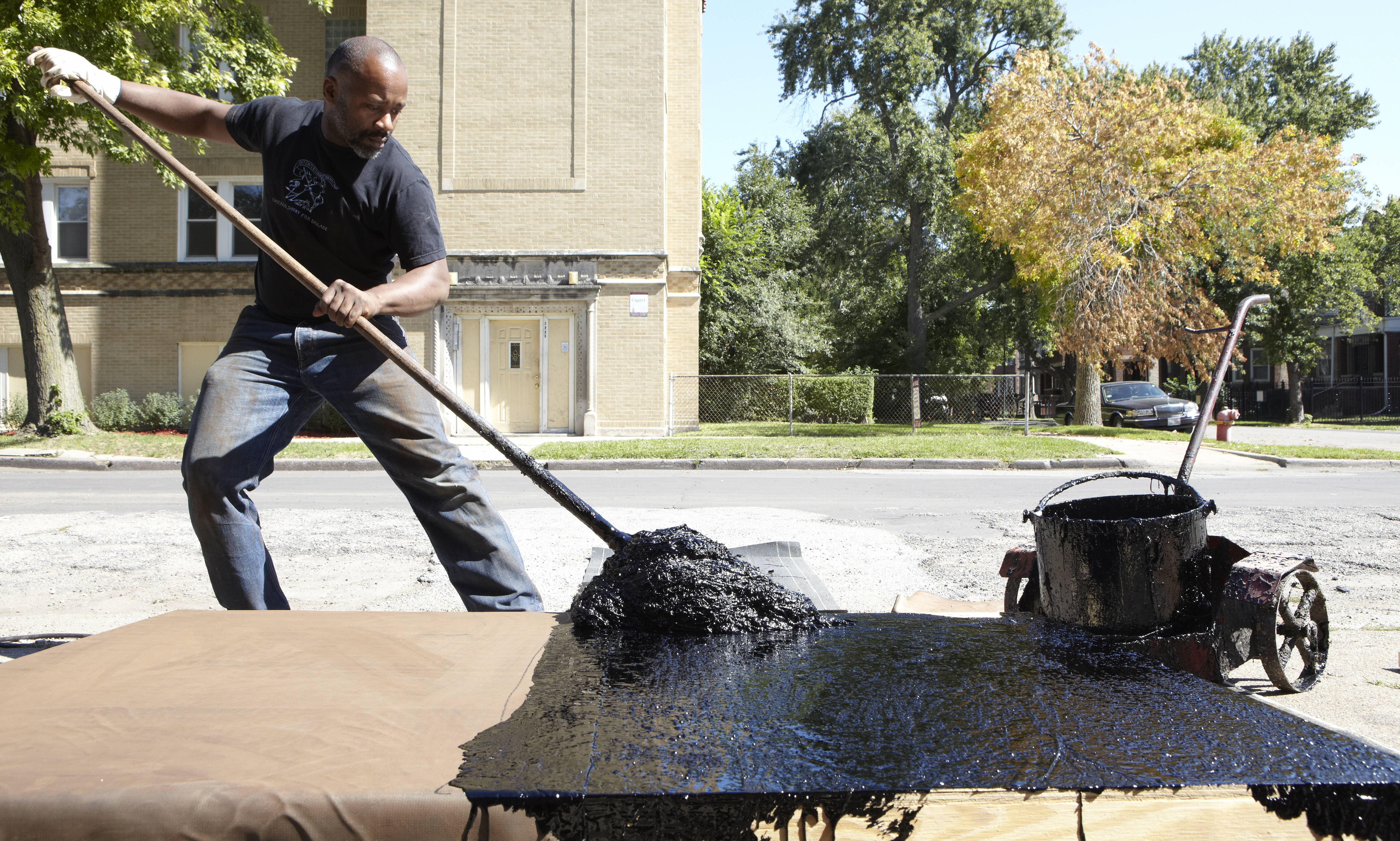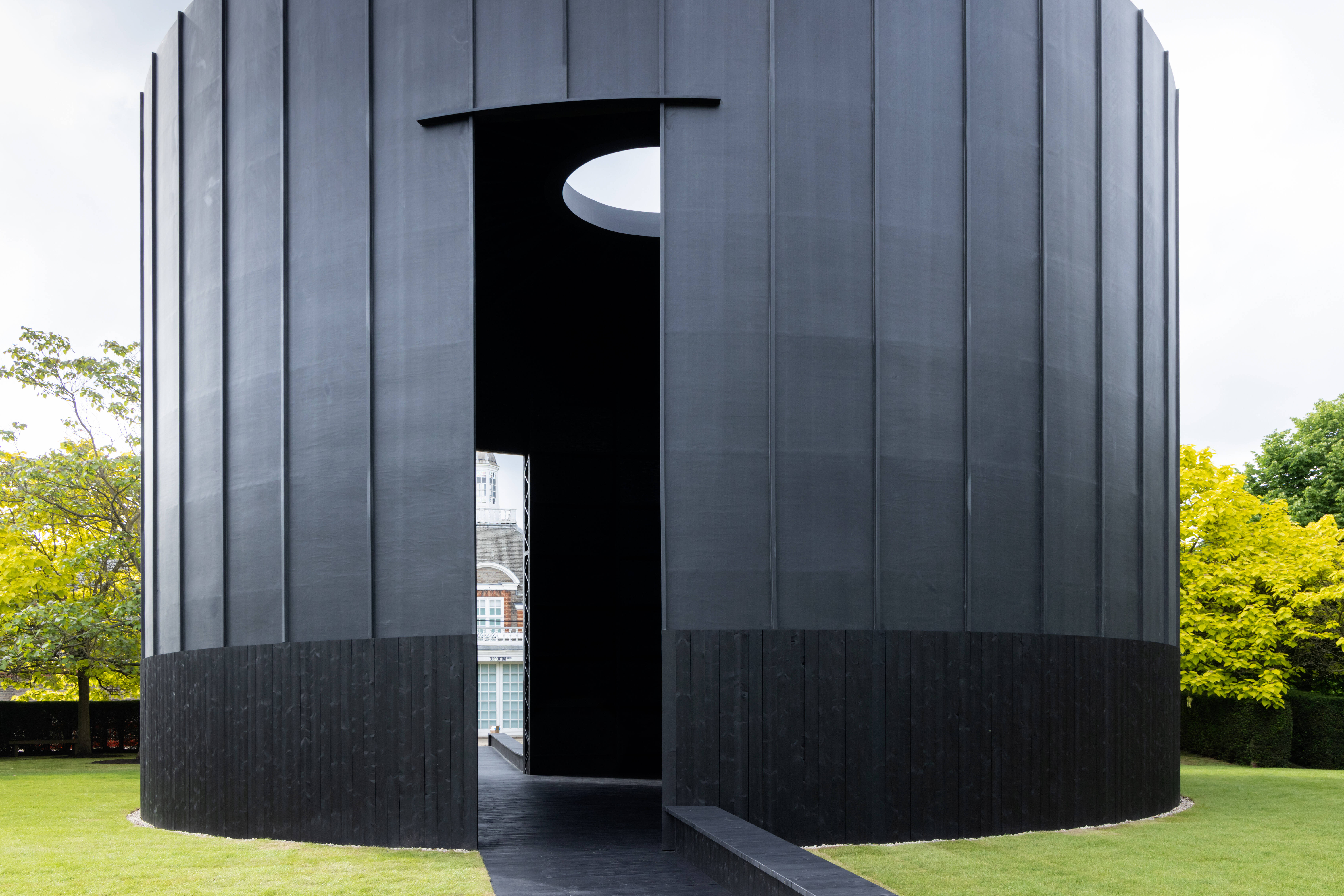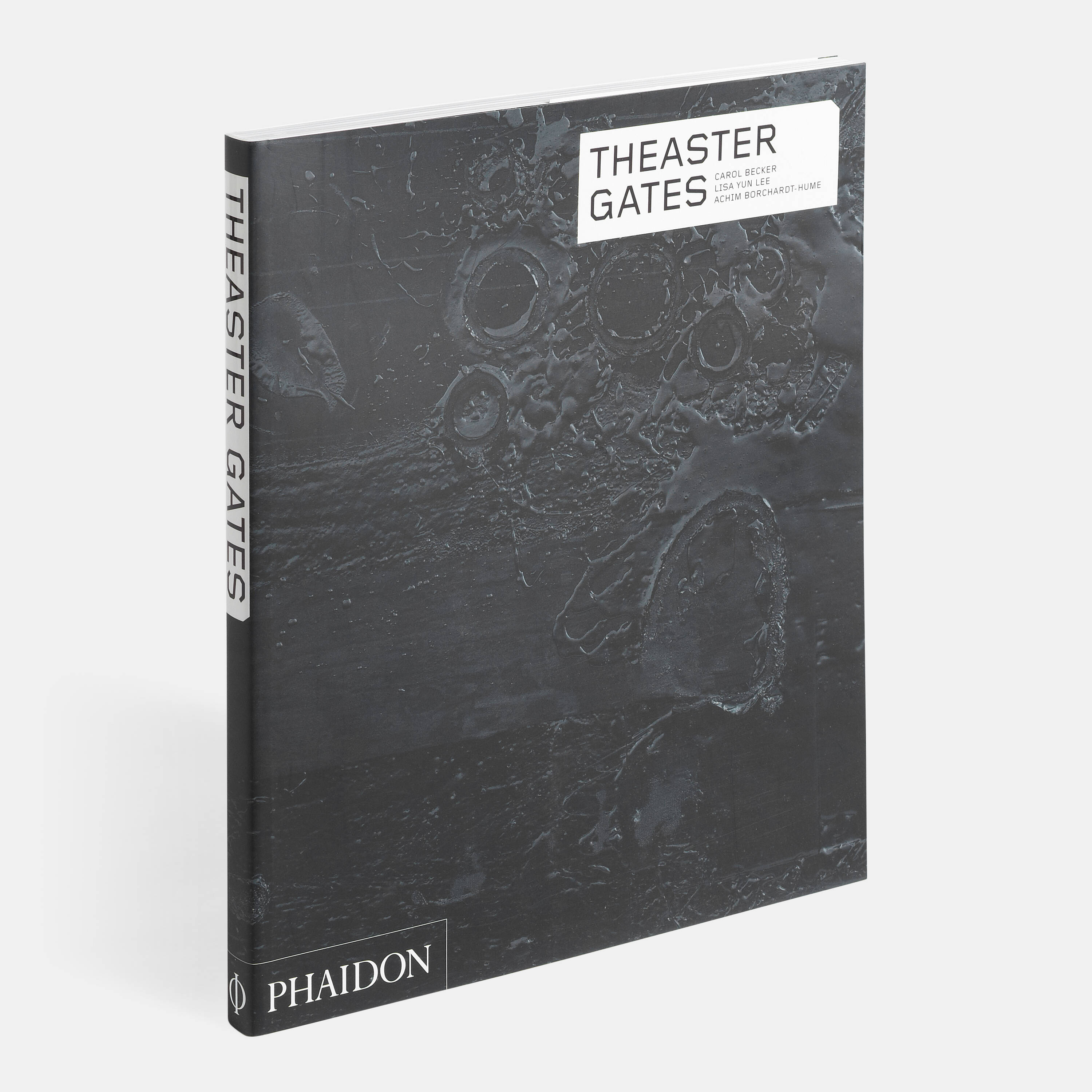
Theaster Gates has created a touching tribute to his father inside this year’s Serpentine Pavilion
Here’s how the artist’s father’s profession informed the seven abstract works hanging inside Black Chapel
On Father’s Day most dads can expect to receive a card, a bottle of aftershave or an LP of unlistenable skronking jazz (here's hoping) ... The artist Theaster Gates, however, has created and installed seven of his tar paintings inside Black Chapel, his Serpentine Pavilion, which opens beside the Serpentine Gallery in London’s Hyde Park, on 10 June, a little over a week before Father’s Day.
An uninformed visitor might look at those black, pictureless canvases and think of the Abstract Expressionists, or other monochromatic painters, such as Robert Ryman. However, a key to understanding these works, as well as Gates’ wider output, lies in our Contemporary Artists monograph. As the artist tells the writer and academic Carol Becker, his father – who passed away recently – was a roofer, and his tar paintings were a way to “give him some flowers while he’s living.”

Theaster Gates creating one of his tar paintings, as reproduced in our Theaster Gates book
“It’s completely sentimental,” Gates goes on. “What first drew me to creating a roofing painting was the fact that he was retiring. Could a certain amount of sentimentality in relationship to this bigger conversation about black labour and the urban condition lead to a body of work that I felt really good about, with my dad as my collaborator? Sometimes I want to make paintings with tar; sometimes I work on the roof with my dad because I’m after a set of relationships. The objects are just the things that allow me to continue the relationship with my dad. It’s not to say that I don’t care about the tar painting, but the tar painting gave us a reason to relate.”
Despite their very personal nature, Gates manages to broaden the works out to address other themes within his work, such as real estate, society and the black experience. “They represent a set of relationships that are important to me, and they’re symbolic of a moment when black men were extremely capable builders and built this country,” he goes on. “And we’re not that anymore. And so the works are a relational practice with my dad, a collaborative effort between him and me. They’re a set of objects that are made. Now I’m looking at roofs and the sublime. I’m looking at Shinto structures and how these old Japanese Buddhist temples were made so that the roof actually held up the walls. I’m learning all this stuff about fourteenth-century cathedrals. I’m just kind of interested in roofing.”

Serpentine Pavilion 2022 designed by Theaster Gates © Theaster Gates Studio. Photo: Iwan Baan. Courtesy: Serpentine
Roofing isn’t the only aspect of building that has captured the artist’s interest. Over the past decade Gates has reclaimed and repurposed a variety of buildings in such a compelling and dynamic fashion, that the New Yorker dubbed him The Real-Estate Artist in a 2014 profile.
Black Chapel has a fully functioning bronze bell installed beside it, which was salvaged from St. Laurence, a landmark Catholic Church that once stood on Chicago’s South Side, and the building itself references a wide range of other structures, from British kilns to the vernacular building traditions of Uganda and Cameroon.
However, there is another, obvious fine art reference point for Black Chapel: the Rothko Chapel, the sacred space in Houston, that the mid-century abstract painter Mark Rothko helped design, and which houses a number of Rothko paintings.
Here’s how the academic and art historian Lisa Yun Lee characterises Gates’ relationship with the place in our book. “One of the spaces in the world that Gates most admires is the Rothko Chapel founded in 1971 by Houston philanthropists John and Dominique de Menil,” she writes. “As an intimate sanctuary available to people of every belief, the chapel was intended to be a gathering place for people who are not just going to debate and discuss theological problems, but who are going to meet because they want to find contact with other people. They are searching for this brotherhood of humanity.’ The idea that individuals, through their passion, social capital and actual capital might create a context that could transform our experience of paint on canvas into one of universal humanity is a utopian project that is on a scale to which Gates can relate.”

Theaster Gates
To find out more about how Gates has taken real estate and social capital and fashioned them into some truly important works of contemporary art, order a copy of our Theaster Gates book here.